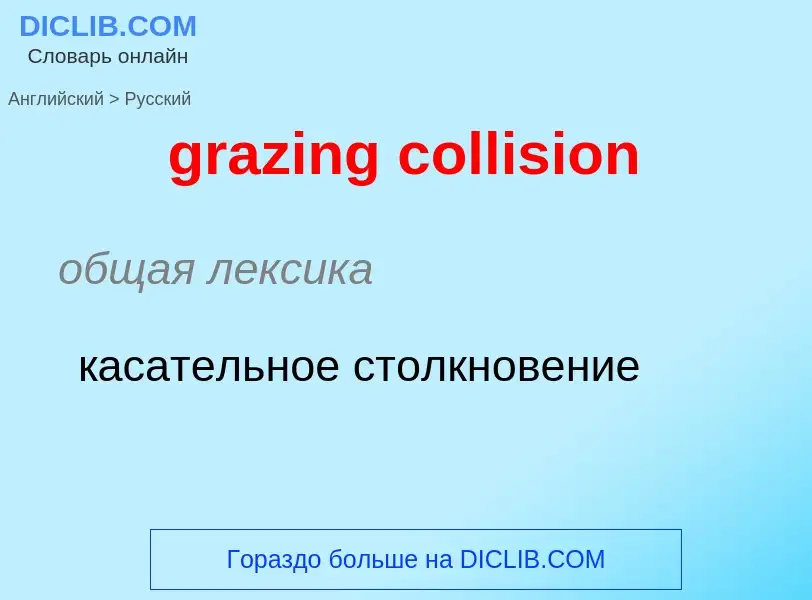Перевод и анализ слов искусственным интеллектом ChatGPT
На этой странице Вы можете получить подробный анализ слова или словосочетания, произведенный с помощью лучшей на сегодняшний день технологии искусственного интеллекта:
- как употребляется слово
- частота употребления
- используется оно чаще в устной или письменной речи
- варианты перевода слова
- примеры употребления (несколько фраз с переводом)
- этимология
grazing collision - перевод на русский
общая лексика
касательное столкновение
общая лексика
хэш-коллизия (столкновение, конфликт)
ситуация, когда два различных ключа выбирают ("хэшируют") одно и то же значение, указывают на одну и ту же ячейку в хэш-таблице
синоним
Смотрите также
общая лексика
неупругий удар
Определение
Википедия
The Taylor Grazing Act of 1934 (Pub. L. 73–482) is a United States federal law that provides for the regulation of grazing on the public lands (excluding Alaska) to improve rangeland conditions and regulate their use.
The law initially permitted 80 million acres (32 million hectares) of previously unreserved public lands of the United States to be placed into grazing districts to be administered by the Department of the Interior. As amended, the law now sets no limit on the amount of lands in grazing districts. Currently, there are approximately 162 million acres (66 million ha) inside grazing allotments.
These can be vacant, unappropriated, and unreserved land from public lands, all except for Alaska, national forests, parks, monuments, Indian reservations, railroad grant lands, and revested Coos Bay Wagon Road grant lands. Surrounding land owners may be granted right of passage over these districts. Permits are given for grazing privileges in the districts. Also permits can be given to build fences, reservoirs, and other improvements.
The permittees are required to pay a fee, and the permit cannot exceed ten years but is renewable. Permits can be revoked because of severe drought or other natural disasters that deplete grazing lands.


